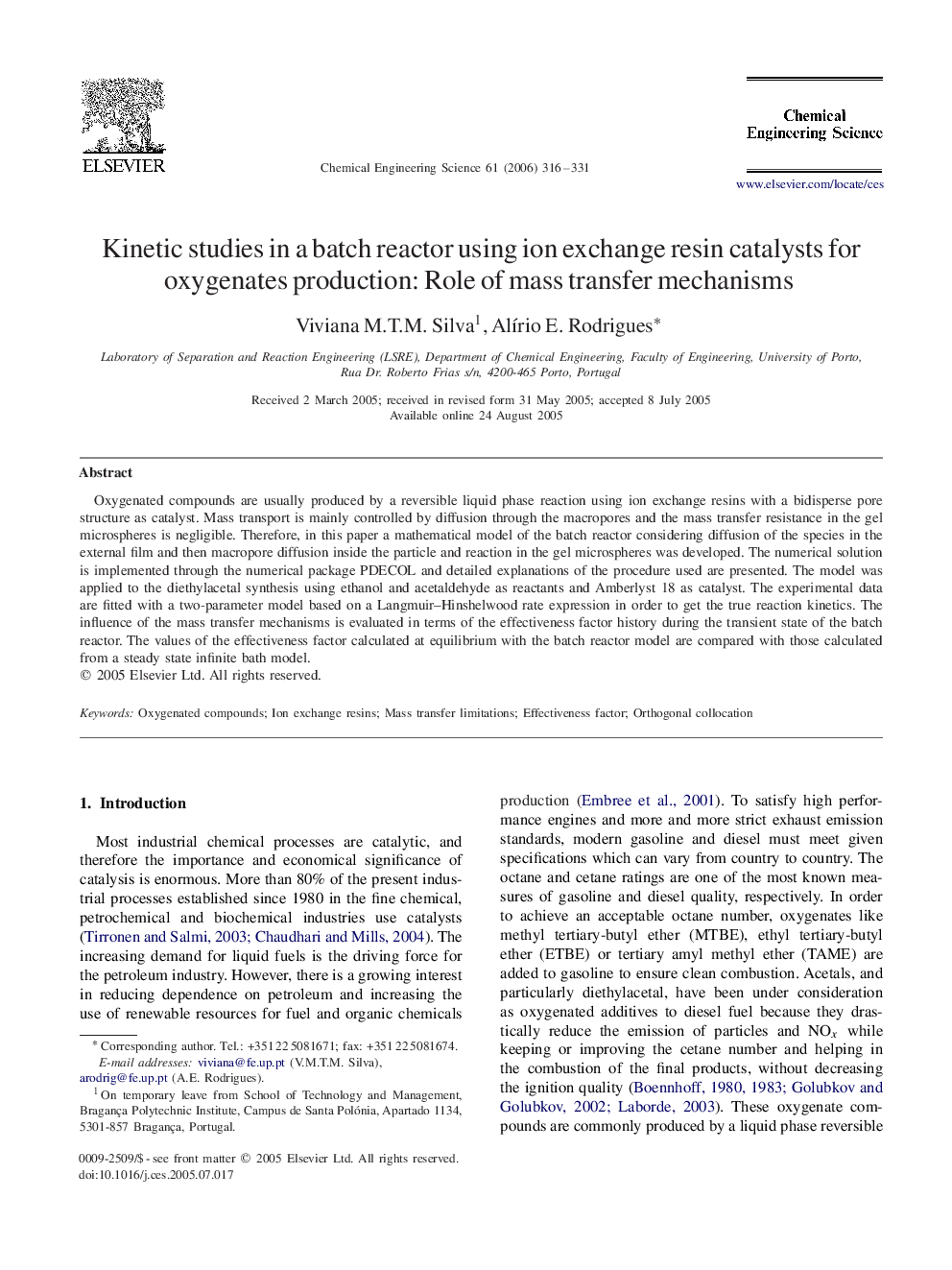| Article ID | Journal | Published Year | Pages | File Type |
|---|---|---|---|---|
| 160036 | Chemical Engineering Science | 2006 | 16 Pages |
Oxygenated compounds are usually produced by a reversible liquid phase reaction using ion exchange resins with a bidisperse pore structure as catalyst. Mass transport is mainly controlled by diffusion through the macropores and the mass transfer resistance in the gel microspheres is negligible. Therefore, in this paper a mathematical model of the batch reactor considering diffusion of the species in the external film and then macropore diffusion inside the particle and reaction in the gel microspheres was developed. The numerical solution is implemented through the numerical package PDECOL and detailed explanations of the procedure used are presented. The model was applied to the diethylacetal synthesis using ethanol and acetaldehyde as reactants and Amberlyst 18 as catalyst. The experimental data are fitted with a two-parameter model based on a Langmuir–Hinshelwood rate expression in order to get the true reaction kinetics. The influence of the mass transfer mechanisms is evaluated in terms of the effectiveness factor history during the transient state of the batch reactor. The values of the effectiveness factor calculated at equilibrium with the batch reactor model are compared with those calculated from a steady state infinite bath model.
